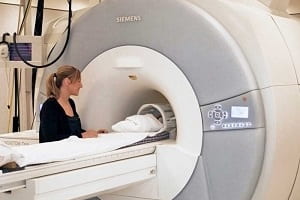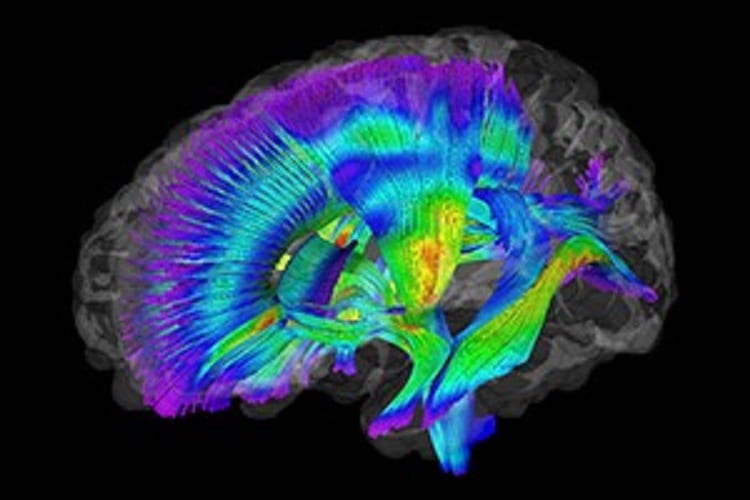A multicenter research team led jointly by Washington University School of Medicine in St. Louis and the University of North Carolina at Chapel Hill has received a five-year, $9.5 million grant to further evaluate whether brain imaging can help detect very high risk of autism spectrum disorder in early infancy. Researchers believe that if they can detect evidence of the disorder earlier, behavioral interventions can begin sooner than currently possible, which may help improve outcomes for affected children.

A mother watches as her sleeping baby undergoes an MRI brain scan. (Photo: Infant Brain Imaging Study)
The new grant, from the National Institute of Mental Health of the National Institutes of Health (NIH), funds the continued efforts of researchers in the Infant Brain Imaging Study (IBIS) network. The scientists are looking for differences in the brains of children who are at risk for autism. This knowledge could be used to link such brain differences to behavior that is associated with autism, further helping to identify very young children at high risk of the disorder.
IBIS network researchers will conduct MRI brain-imaging studies on infant siblings of children with autism diagnoses. Such children are known to have a 20 percent chance of developing autism spectrum disorder themselves. In previous work, IBIS researchers have demonstrated that specific findings on MRI scans in children as young as 6 months of age can accurately predict which children later will be diagnosed with autism. They also have identified behaviors that indicate a high risk for a later autism diagnosis.
“During the first phase of the study, we identified brain imaging predictors of a later autism diagnosis in high-risk infants when they were 6 months of age,” said co-principal investigator John R. Pruett, Jr., MD, PhD, an associate professor of child psychiatry at Washington University School of Medicine. “In this next phase, we will work with an entirely different set of families to make sure our initial findings can be replicated. At the same time, we believe we can begin to match imaging findings to clinical findings. In the future we hope to test behavioral interventions earlier in high-risk infants who, currently, are still too young to receive an autism diagnosis.”
